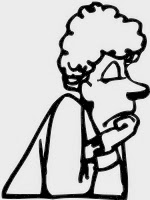For stretches of time I forget all about Jeff Wayne and his musical version of H.G. Wells' 1898 novel, War of the Worlds, then something reminds me - and I'm amazed by it all over again, and covered in goosebumps. This time the reminder came when I noticed that Jeff Wayne's birthday will be tomorrow, 1 July, he'll be 71. Dang!!
Happy birthday Jeff Wayne!
Here we go then, I cannot let an opportunity to post at least the best known segments from this wonderful album - the original 1978 version, with Richard Burton narrating, Justin Hayward, Julie Covington, Phil Lynott, David Essex and Chris Thompson singing. Jeff Wayne composed the music and conducted the orchestra. The album itself spent 290 weeks in the UK album charts. It was in the top 10 in 22 countries and reached #1 in 11 countries. Most of the lyrics on the album were written by former Elton John lyricist Gary Osborne. There is a more recent do-over of the album featuring Liam Neeson narrating and various other vocalists, better known to today's younger generation, singing the parts. I've listened to some of what's available on YouTube, and declare the 1978 version to be my preference in every way.....but if the newer version helps to filter this music into the consciousness of today's youth - it has to be a good thing.
I'll limit myself to three snips of the best known pieces : Eve of the War; Spirit of Man; and Forever Autumn.
Eve of War ~ Richard Burton:
Spirit of Man ~ Julie Covington, Phil Lynott, David Essex:
Forever Autumn ~ Justin Hayward, with Richard Burton narrating:
Journalist: For three days I fought my way along roads packed with refugees, the homeless, burdened with boxes and bundles containing their valuables. All that was of value to me was in London, but by the time I reached their little red brick house, Carrie and her father were gone.
The summer sun is fading as the year grows old,
And darker days are drawing near,
The winter winds will be much colder,
Now you're not here
I watch the birds fly south across the Autumn sky,
And one by one they disappear,
I with that I was flying with them,
Now you're not here...................
Happy birthday Jeff Wayne!
Here we go then, I cannot let an opportunity to post at least the best known segments from this wonderful album - the original 1978 version, with Richard Burton narrating, Justin Hayward, Julie Covington, Phil Lynott, David Essex and Chris Thompson singing. Jeff Wayne composed the music and conducted the orchestra. The album itself spent 290 weeks in the UK album charts. It was in the top 10 in 22 countries and reached #1 in 11 countries. Most of the lyrics on the album were written by former Elton John lyricist Gary Osborne. There is a more recent do-over of the album featuring Liam Neeson narrating and various other vocalists, better known to today's younger generation, singing the parts. I've listened to some of what's available on YouTube, and declare the 1978 version to be my preference in every way.....but if the newer version helps to filter this music into the consciousness of today's youth - it has to be a good thing.
I'll limit myself to three snips of the best known pieces : Eve of the War; Spirit of Man; and Forever Autumn.
Eve of War ~ Richard Burton:
"Never before in the history of the world had such a mass of human beings moved and suffered together. This was no disciplined march – it was a stampede – without order and without a goal, six million people unarmed and unprovisioned, driving headlong. It was the beginning of the rout of civilisation, of the massacre of mankind."
Spirit of Man ~ Julie Covington, Phil Lynott, David Essex:
There must be something worth living for,(As a commenter at YouTube remarked, "The Spirit of Man" something that's going to be tested severely over the next few decades.)
There must be something worth trying for,
Even some things worth dying for,
And if one man can stand tall,
There must be some hope for us all,
Somewhere, somewhere in the spirit of man.
Forever Autumn ~ Justin Hayward, with Richard Burton narrating:
Journalist: For three days I fought my way along roads packed with refugees, the homeless, burdened with boxes and bundles containing their valuables. All that was of value to me was in London, but by the time I reached their little red brick house, Carrie and her father were gone.
The summer sun is fading as the year grows old,
And darker days are drawing near,
The winter winds will be much colder,
Now you're not here
I watch the birds fly south across the Autumn sky,
And one by one they disappear,
I with that I was flying with them,
Now you're not here...................












































